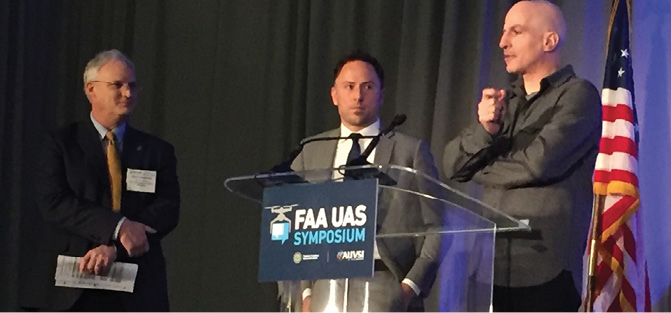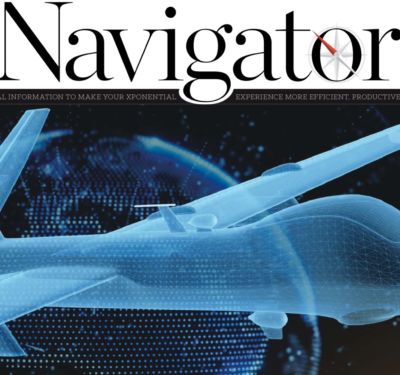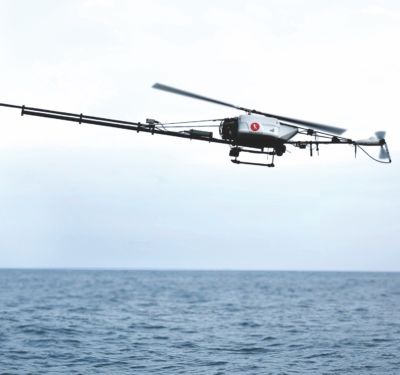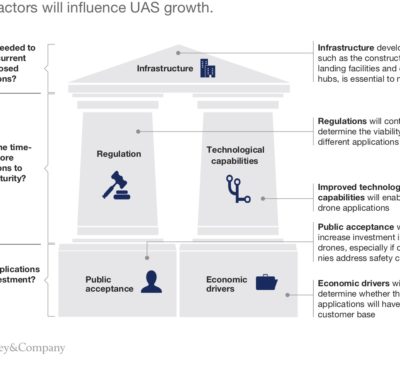
(L to R) Earl Lawrence, director of the FAA’s UAS Integration Office and James Ryan Burgess of Alphabet’s Project Wing listen to Amazon Prime Air’s Gur Kimchi answer a question at the 2018 FAA Symposium in Baltimore.
Fans of automation are anxious to see drones take some of the pressure off the nation’s highways by shifting the delivery of small packages from trucks to the still empty corridors hundreds of feet above the roadways. (See Brian Wynne Interview page 6)
This new approach, however, energizes a familiar worry—what happens to the data gathered as the latest blockbuster from your favorite mystery writer is whisked to your backyard? Who owns the data that is generated by all these electronic couriers and what do the owners hope to do with it?
Information about the specific purchase being dropped off is likely less relevant for this debate because that information can be collected any number of ways including indirectly via one’s credit card company.
The truly new opportunity lies in what a company can learn through its rotor-powered runners—and Amazon is already placing bets in this arena. Amazon Technologies, Inc. filed a patent last July for a system that could capture images as a drone is making deliveries and then use those images to develop recommendations. Does your roof need repair? Do your trees need trimming? Amazon may be able to suggest a few contractors.
The more immediate question, however, may be how firms will share—or not—the less glamorous, but perhaps more valuable, drone telemetry and performance data. Debate on this issue may be just on the horizon.
Given the limits of the current air traffic control system and the federal budget, experts working on unmanned traffic management (UTM) are suggesting a federated approach where companies build and manage sections of the system—a technique similar to how the Internet is supported. Operators wanting to use the system would contract with the companies, not the Federal Aviation Administration (FAA).
Speaking before the 2018 FAA Symposium, James Ryan Burgess, co-lead on Alphabet’s Project Wing, sees the data question as an avenue for competitive advantage.
“If someone wishes to use UTM as a service as represented in this architecture,” Burgess said, “they can pick a provider that they trust—that they’re willing to share their data with, their telemetry and other information. We think that having the industry be the keeper of the data allows for security and maintenance of that data but also allows consumer choice.”
Burgess said data would need to be made available to the FAA so the agency could audit the system and make sure it’s being operated safely. “But we love it if who owns the data is the users’ choice.”
Gur Kimchi, the vice president and co-founder of Amazon Prime Air, said aerospace is a special case and it is important that performance data be disseminated for safety reasons.
“The only way we ensure that everybody has the safest system possible is we share the performance data,” Kimchi said. Such sharing is “actually a foreign concept for people who come from outside of the space. It’s my flight. My mission. My performance. I want to use it for my own reasons. That’s not how aerospace works. People share data, performance-based data all the time.”
The question of customer data is a separate issue, Kimchi said, adding “customers should own the data.”
But it’s essential that data related to the safety of the system be shared, Kimchi said. “As a system, we are only as safe as the least safe element in it.”






